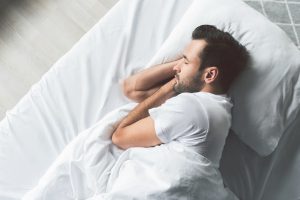 There may be more tools and techniques available to treat pain than ever before, but that doesn’t make it any easier.
There may be more tools and techniques available to treat pain than ever before, but that doesn’t make it any easier.
Traditionally and instinctually, rest has been assigned as the great reliever of pain. Not so much anymore. These days, your doctor is more likely to tell you to increase activity and reduce rest to treat pain.
Advertisement
Of course, the lines can get murky. Sometimes, movement can be the ultimate pain reliever. Other times, it can be dangerous. In some cases, rest and relaxation is the way to help the pain subside.
All of this can get very confusing. Let’s take a look at what might be the best treatment technique for your pain.
In most cases, movement will help. Research suggests exercise can ease pain, improve physical function, and boost quality of life. It may also reduce the risk of future pain.
Exercise may work best for treating chronic pain, like back pain or arthritis, caused by tightness. Inactivity can make these conditions worse. Exercise can also help with injury recovery when conducted under the care of a healthcare professional.
Activity, of course, has its limits. So, if you’re experiencing pain while performing it, stop, slow down, or change the technique.
If you’ve recently suffered an acute injury or it is flaring up, rest is likely your best option. Quite simply, your body needs time to heal. Performing activity prematurely may lead to further injury or other setbacks.
Advertisement
Even if you are experiencing chronic pain, rest may come in handy if it is used properly. It’s okay to spend a couple of hours lying down if needed. Ensure those periods are few and far between. Try to avoid doing it more than once or twice per week and avoid spending a full day lying down.
When you do lay down, there are a few techniques that may aid its effectiveness. They include:
- Putting pillows under the head and between your knees if lying on your side.
- Put pillows under your hips when laying on your stomach.
Use lying down as a last resort if the pain is not the result of an injury. If the pain appears, try movement and then use hot or cold treatments. When you’re out of options, lay down for as short a period as needed.
